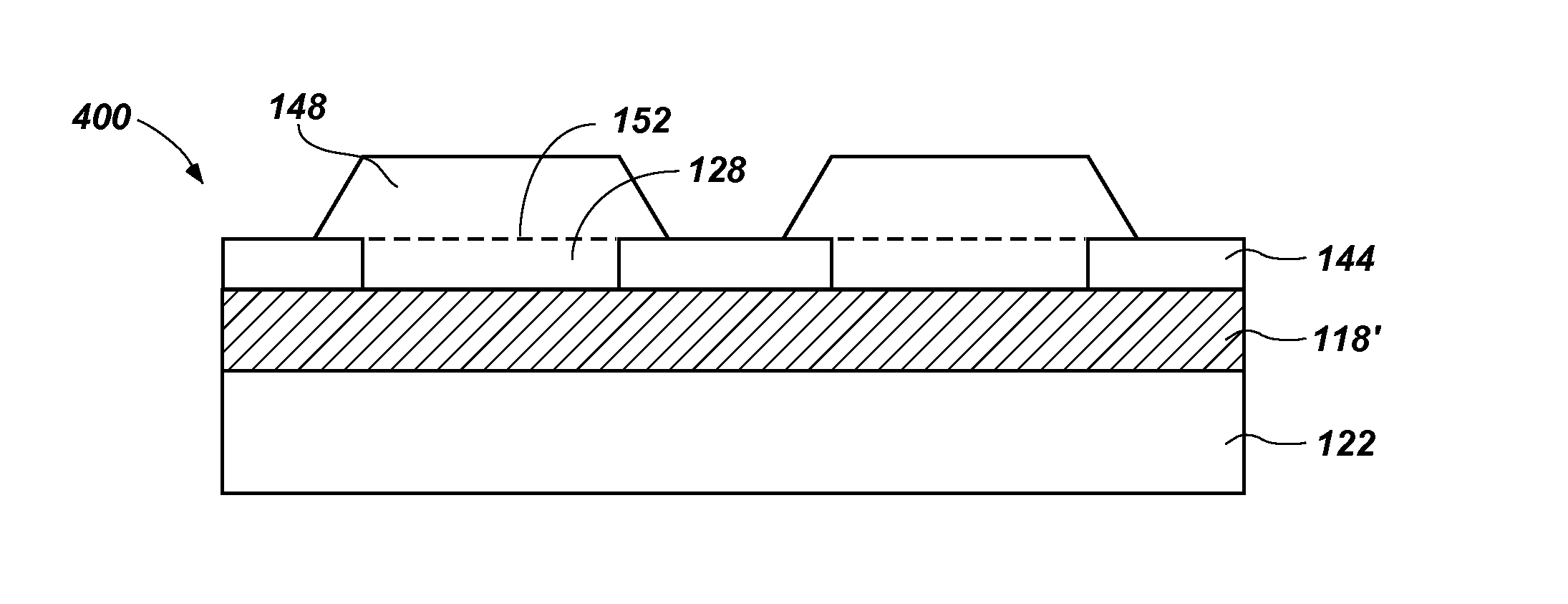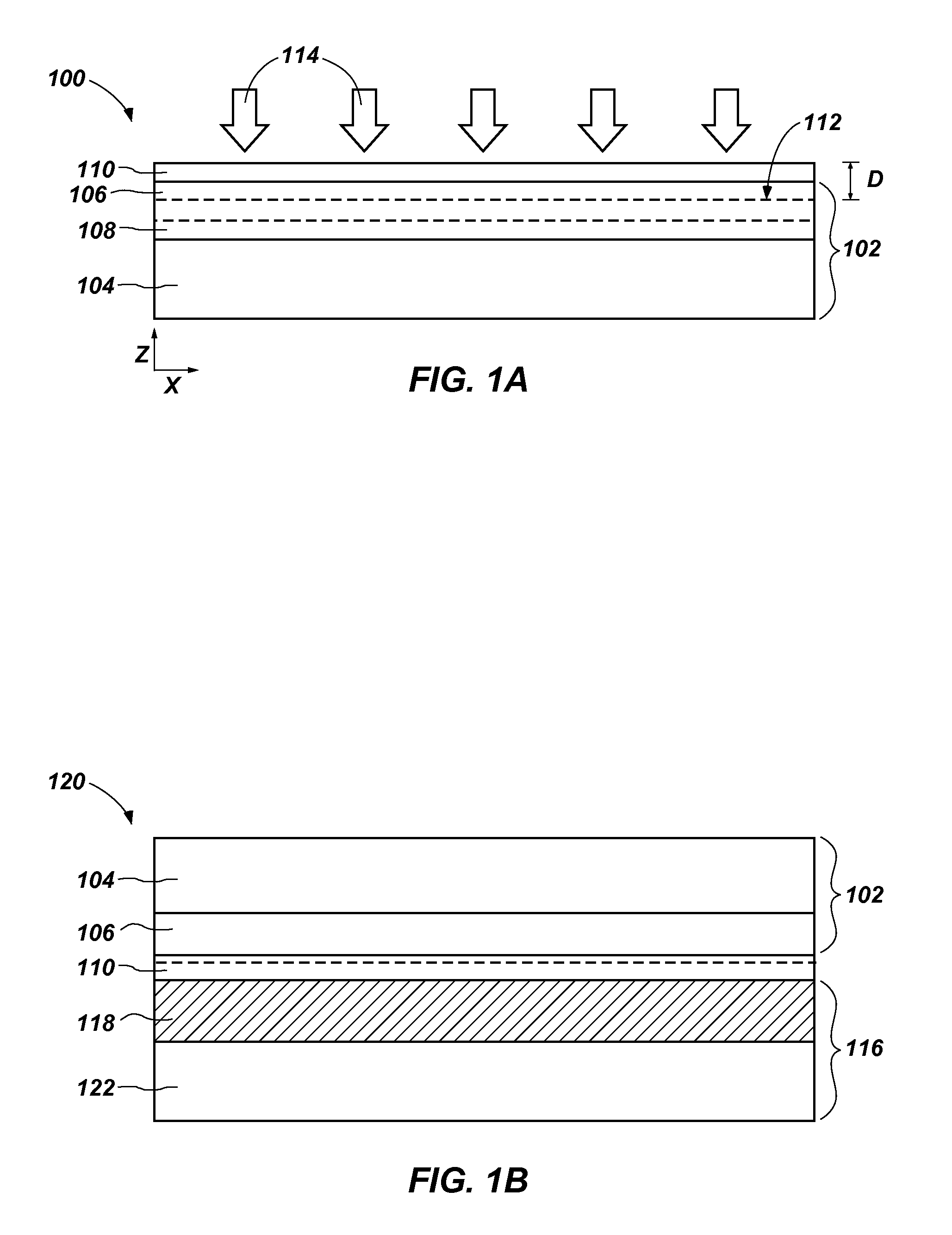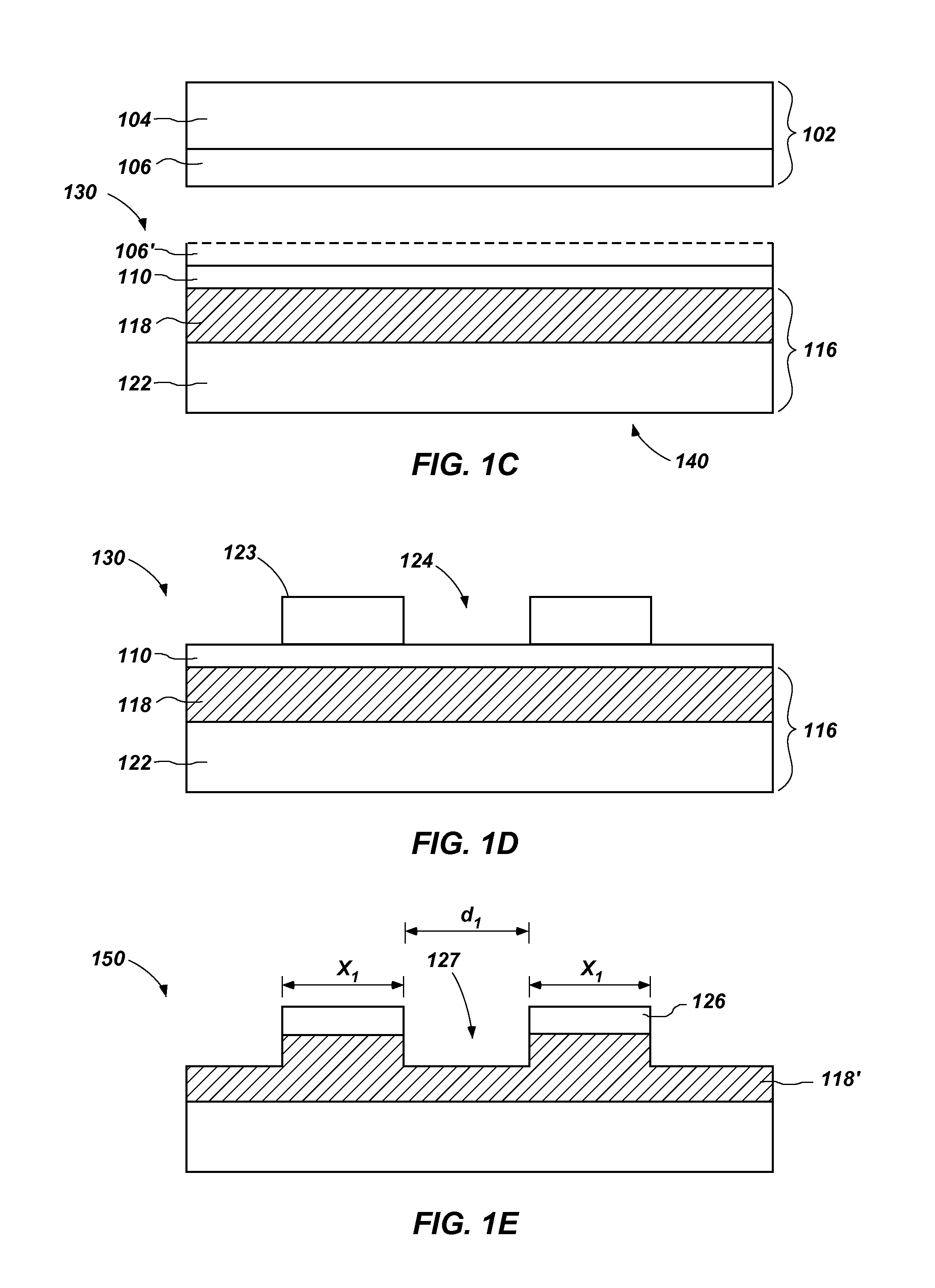Strain relaxation using metal materials and related structures
a metal material and relaxation technology, applied in the direction of semiconductor devices, basic electric elements, electrical apparatus, etc., can solve the problems of limiting the thickness of the layers and/or the concentration of indium therein, limiting the thickness of the layers and/or the use of strained layers of semiconductor materials, and reducing the effect of cross-sectional separation
- Summary
- Abstract
- Description
- Claims
- Application Information
AI Technical Summary
Benefits of technology
Problems solved by technology
Method used
Image
Examples
embodiment 1
[0092] A method of fabricating a semiconductor structure, comprising: forming a metal material over a III-V type semiconductor material and deforming the metal material to relax the III-V type semiconductor material
[0093]Embodiment 2: The method of Embodiment 1, wherein deforming the metal material to relax the III-V type semiconductor material comprises deforming the metal material to reduce compressive strain in a III-V type semiconductor material comprising indium gallium nitride.
[0094]Embodiment 3: The method of Embodiment 1, wherein deforming the metal material to relax the III-V type semiconductor material comprises deforming the metal material to reduce tensile strain in a III-V type semiconductor material comprising aluminum gallium nitride.
[0095]Embodiment 4: The method of any one of Embodiments 1 through 3, wherein deforming the metal material to relax the III-V type semiconductor material comprises heating the metal material.
[0096]Embodiment 5: The method of any one of Em...
embodiment 8
[0099] A method of fabricating a semiconductor structure, comprising: removing a portion of each of a semiconductor material and a metal material overlying a substrate to form a plurality of openings; heating the metal material to alter a ductility thereof; depositing another semiconductor material over the remaining portions of the semiconductor material; and removing a portion the metal material from between each of the remaining portions of the semiconductor material.
embodiment 9
[0100] The method of Embodiment 8, wherein removing a portion of each of a semiconductor material and a metal material overlying a substrate to form a plurality of openings comprises forming the plurality of openings to extend through the semiconductor material and partially into the metal material
[0101]Embodiment 10: The method of Embodiment 8 or Embodiment 9, heating the metal material to alter a ductility thereof occurs simultaneously with depositing another semiconductor material over the remaining portions of the semiconductor material.
[0102]Embodiment 11: The method of any one of Embodiments 8 through 10, heating the metal material to alter a ductility thereof comprises deforming a metal material comprising at least one of hafnium and zirconium.
[0103]Embodiment 12: The method of any one of Embodiments 8 through 11, further comprising heating the metal material to alter a ductility thereof after removing the portion the metal material between each of the remaining portions of t...
PUM
| Property | Measurement | Unit |
|---|---|---|
| temperature | aaaaa | aaaaa |
| diameters | aaaaa | aaaaa |
| diameters | aaaaa | aaaaa |
Abstract
Description
Claims
Application Information
 Login to View More
Login to View More - R&D
- Intellectual Property
- Life Sciences
- Materials
- Tech Scout
- Unparalleled Data Quality
- Higher Quality Content
- 60% Fewer Hallucinations
Browse by: Latest US Patents, China's latest patents, Technical Efficacy Thesaurus, Application Domain, Technology Topic, Popular Technical Reports.
© 2025 PatSnap. All rights reserved.Legal|Privacy policy|Modern Slavery Act Transparency Statement|Sitemap|About US| Contact US: help@patsnap.com



